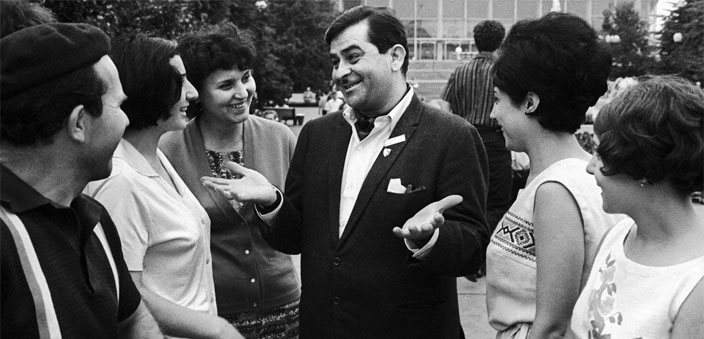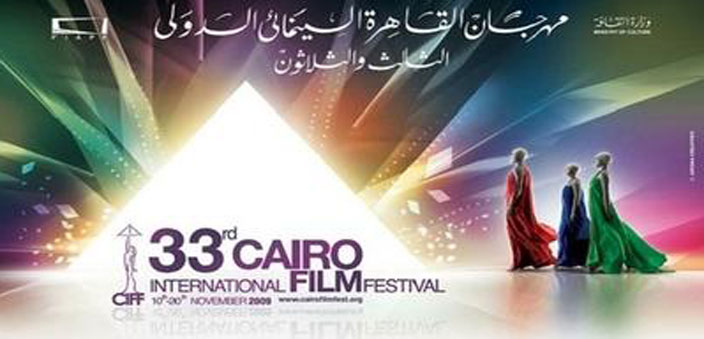India was the guest of honour at the 33rd Cairo International Film Festival (CIFF), which opened in Cairo in 2009 with the screening of New York directed by Kabir Khan. The India Focus notwithstanding, this writer learnt that Egypt had banned Indian films from being screened in its theatres for 20 years. Yet, when I strolled across to reach the theatre nearby, I saw that among the pictures spread out by the hawkers on the pavements on either side, were huge posters of Amitabh Bachchan as the Angry Young Man. They identified me as the lady from the country where Bachchan belongs. They knew neither Hindi nor English. My bindi gave me away as an Indian. Since they had not seen any Indian film for 20 years, they had no clue that he had aged and now did mature roles. Such is the influence of Bollywood on Egypt.
The opening of doors
Chennai Express created a new milestone for Bollywood in Egypt with the thundering response to its release in theatres of Cairo. After two decades, Egypt finally made way for the gateway to Indian cinema. On 2nd October 2013, United Motion Pictures (UMP), Egypt, tied up with Gaurang Films (GF), Kolkata, to distribute Indian films theatrically in Egypt. “90% of the exhibition market lies in Cairo and Alexandria. Both cities will release these films in multiplex theatres and also in single-theatre outlets,” informs Gaurang Jalan.
Flash forward to 2017. Despite the political turbulence in the country, the Cairo Film Festival organised by the Maulana Azad Centre for Indian Culture (MACIC) of the Embassy of India, in collaboration with the Culture Development Fund of the Egyptian Ministry of Culture, featured an eclectic mix of contemporary and evergreen Hindi films with leading stars Shahrukh Khan to Amitabh Bachchan and others. The films included Devdas, Mera Naam Joker, Drishyam, Mother India, Black, Swades and Sangam. “We wanted to bring Indian movies onto the big screen because in Egypt you see them only on the television, so that is why we wanted to bring some old classics like Sangam, Mother India and others which are very well known, and some contemporary films,” said Sanjay Bhattacharya, Indian Ambassador to Egypt.
In January this year, Israeli Prime Minister (PM) Benjamin Netanyahu’s six-day visit to India on the invitation of the Indian PM Narendra Modi, raised a lot of controversy and a lot of anger in many quarters. But Bollywood turned a deaf ear to all this and met the PM on his last day of the tour. “The world loves Bollywood, Israel loves Bollywood, I love Bollywood”, said Israel Prime Minister Benjamin Netanyahu as he wished “Shalom” to the Hindi film fraternity at a glittering event where he was welcomed by megastar Amitabh Bachchan. The visiting PM showcased Israel’s natural beauty as a shooting hotspot for Bollywood, which has helped boost tourism for several exotic foreign locales over the years .”You have seen what you find in Israel. In an hour’s drive, you have snow, the beaches, the desert; you have the salty sea, a sweet lake, great Indian food,” he said. Extending an open invitation, Netanyahu added that Israel and Bollywood “can create magic” by forging partnerships with its technology giants.
“In recent times, Netanyahu has not had a very easy time with his western allies. After years of indulgence for Israel’s expansionist urges, the West is showing a faint glimmer of awakening to the disastrous denial of Palestinian rights. In circumstances where Israel’s intent to render Palestinians into a state of permanent displacement are abundantly clear, the global civil society has stepped up to shame weak-kneed governments. The “boycott, divestment and sanctions”(BDS) movement was launched by a broad coalition of Palestinian civil society actors, to hold Israeli entities to account – where culpability was proven – for the occupation and the daily violations of the human rights of Palestinians. Since the call went out from Palestine in 2005, BDS has gained traction especially in Israel’s traditionally unquestioning allies in the West,” wrote Sukumar Muralidharan in The Wire. But all this has not had any negative impact in the least in the renewed relations between India and Israel in general, and Israel and Bollywood, in particular.
The old connection
Themes and images of globalisation in Bollywood that has transformed it into a “calling card” for India in the outside world are not recent. For decades, Hindi films have alluded to transnational identities to keep up to certain preconceived and fixed notions of ‘Indianness’. But notions began to change and a very popular song from Raj Kapoor’s Shree 420 (1955) Merajootahai Japani…comes up perhaps as the earliest example. The first lines of the song, hugely successful in India and the Soviet Union, are:
My shoes are Japanese,
My trousers English,
The red hat on my head is Russian,
But my heart remains Indian
– (Kaur, R. and Sinha, A.J. – Bollyworld: Popular Indian Cinema through a Transnational Lens)
Lip-synced by Raj Kapoor in Shree 420 merrily strolling down the road with a backpack, became a symbol for classic Bollywood; i.e., “assert(ing) an Indian identity in the face of global consumerism.” (Communicating globalization in Bombay cinema: Everyday life, imagination and the persistence of the local’ in Comparative American Studies: An International Journal Vol 3, Issue 3, pp 319-344.) By foreshadowing the widespread economic shifts to come in later decades, the song became a “narrative about the production of nationalism through its intricate entanglement with the global that though the Indian nation is swamped with all kinds of foreign influences on products, this does not need to undermine the strength of patriotism.”

The most important function of Bollywood – its cinema and the people who inhabit the film industry is its ability to act as an interface between traditions of Indian society and disturbing modern or Western intrusions into it. The Hindi film is a means of; (a) giving cultural meaning to Western structures superimposed on society, (b) demystifying some of the culturally unacceptable modern structures now in vogue, and (c) ritually neutralising elements of the modern world that must be accepted for sheer survival. Are Western intrusions into the Hindi mainstream film ethos really disturbing? Not really, because the emphasis is not on the inner struggle between modernity and tradition. Nor is it on any deep ambivalence towards the West. The function of the Hindi film according to Shyam Benegal, the noted film-maker, is to externalise an inner psychological conflict and handle the inner passion generated by social and political processes, as problems created by events and persons outside. These events and persons are both ideal types and representatives of different aspects of a fragmented self. These fragments are separately controlled.
Bollywood seeks to sustain this control by sharpening the focus of these differences – the hero and the anti-hero, the heroine and the anti-heroine, the large-hearted father-in-law and the middle-aged don. Hindi cinema does this because integration of these separate fragments into a unified whole would highlight the grey elements of characterisation that it does not wish to adhere to. The cinematic influences of a foreign culture cannot uproot the cultural roots of a nation dotted with a largely illiterate mass population nurtured on a steady and generous diet of mythology, folklore, theatre, folk arts, music, all of which are reflected, represented, interpreted, distorted and questioned in and by popular cinema.
Reflection of change in values
Rapid globalisation and the advances made in electronic communication have created an ambiguous relationship between Western and Indian traditions. Till about 30 to 35 years ago, the socio-political backdrop in which culture evolved underscored traditional Indian values of simple living and non-materialist goals as the ideal. The growth of the urban middle class, a chunk of which is composed of the urban slum, has brought in its wake a paradigmatic change. Materialistic goals have neatly and definitely replaced ideology. This is a spin-off of globalisation. The family as the basic unit of Indian society has surrendered to the growing demand for the individual as the basic unit, thereby fragmenting and decimating society from a cohesive whole of related people to single, atom-like individual units. This materialism is not a Western import. It is an inevitable and inescapable part of global reality. All this finds expression in a popular, much-adulated film like Dilwale Dulhaniya Le Jayenge. The film illustrates an idealistic blend in mainstream entertainment where the displaced NRI is constantly rid with feelings of nostalgia for his homeland. He seeks vicarious satisfaction in feeding the pigeons in London’s Trafalgar Square since he can no longer feed the pigeons back in his Punjab village.
Thanks to the information highway and the opening up of technological gizmos where films can be downloaded on cell phones and exported through DVDs across the globe, regional films, mainstream and off-mainstream, have reached many countries of the world almost simultaneously with their home premieres. Rajnikant and Kamal Hassan’s films are a great rage across the Middle-East, in the US and so on. The native citizens of Greece and Romania are great fans of Amitabh Bachchan’s films, while France, Italy and other European nations swoon equally over the films of Satyajit Ray, Mani Ratnam and Adoor Gopalakrishnan.
Bollywood films are being dubbed into European languages, attracting newer audiences and greater revenue. But then, cinema has proven itself over the years to be more than mere business. It is first and foremost an art form, but one that by its nature has to involve huge sums of money. Cinema has perforce a role to play much beyond just its commercial aspects, and this is where the importance of functioning as a diplomatic calling card is so important – other than to those who are so glamorised by Bollywood, as to be blind to reality.


 [/column]
[/column]